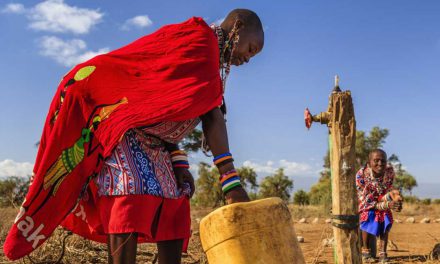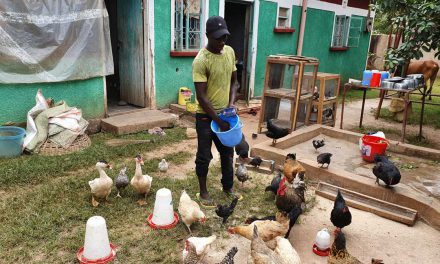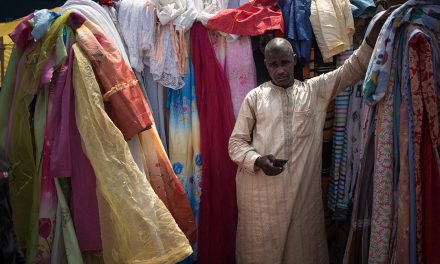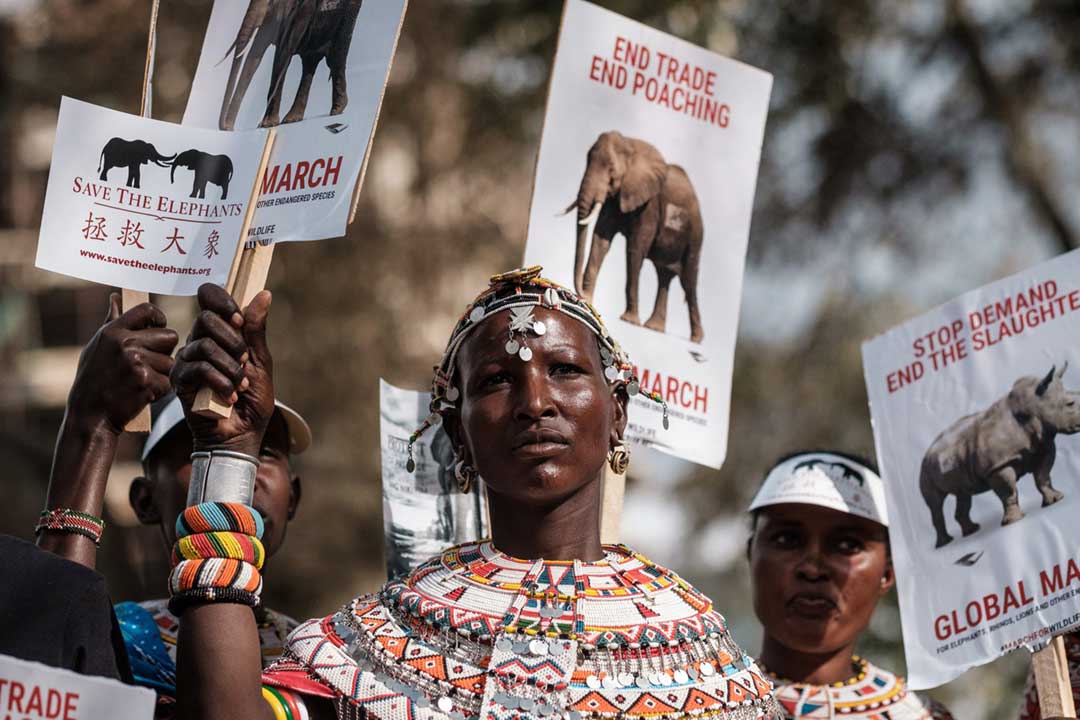
A Samburu woman at the Global March for Elephants, Rhinos, Lions and other endangered species (GMFER) to raise awareness and demand governments take action to stop the poaching of elephants and rhinos and to protect endangered wildlife in Nairobi, Kenya, 2019. Photo: Yasuyoshi Chiba/AFP
When COVID-19 first broke out, there was great hope that what was a catastrophe for humans would be a blessing for wild animals. This hope rested on early theories that the novel coronavirus had passed, en route from a bat, through the immune system of a live pangolin in the wet market in Wuhan, China (then considered the epicentre of the outbreak), helping facilitate the crucial mutation that made humans susceptible to the virus.
Pangolins already held the title as the world’s “most smuggled mammals” and so were closely associated with transnational wildlife trafficking. They are critically endangered in China and are difficult to breed in captivity. There were decent odds that any coronavirus-hosting specimen had been poached in the wild, maybe even on the other side of the international border. This would be the most powerful example of a threat that conservationists had been warning governments about for years – that the illegal wildlife trade brought the risk of zoonotic disease to dense human settlements.
Campaigners seized on the opportunity to call for strict, comprehensive, and punitive measures they hoped would stop the illegal wildlife trade. At first, it did seem like the COVID-19 pandemic was a political moment that would bring reprieve to widely trafficked animals. Much of the highest-volume, highest-value wildlife trafficking – like that of ivory, rhino horn, pangolin scales, and abalone – happens between Africa, where the animals are poached, and Asia, where products containing their parts are consumed.And in the wake of COVID-19, governments around Asia promulgated new laws and policies affecting the operations of physical markets where wild animal products are often sold.
The biggest global consumer of many African animal products, China passed laws which conservationists hoped would effectively ban the trade in wild animals and their parts in the country. At the same time, public health measures to slow the virus’s spread caused unprecedented disruption to human movement, and people hoped this too would slow down networks trafficking endangered animal commodities across borders. There were early signs it did: rhino poaching in South Africa dropped by 33% (compared to 2019 levels) in 2020.
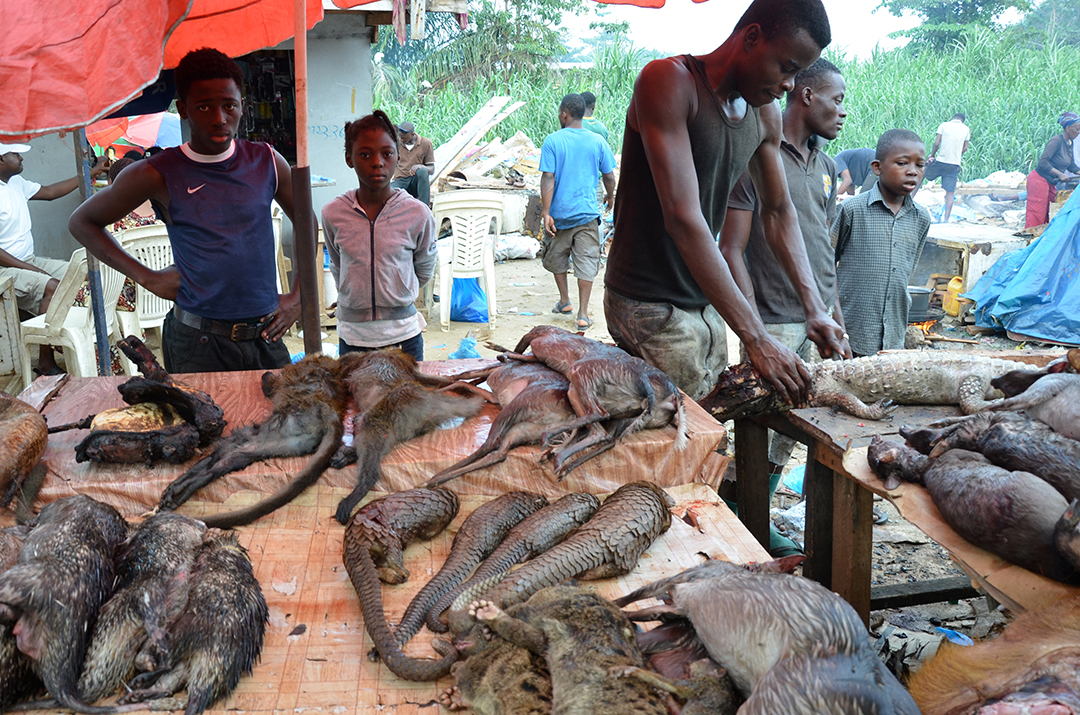
Dead pangolins and other wildlife for sale at the Owendo market in Libreville, Gabon. Photo: Celia Lebur/AFP
Since then, the question of the origins of the virus has gotten vastly more controversial – with the theory that the virus originated in a lab leak (instead of having zoonotic origins) now fuelling geopolitical tensions. Even if the origin is zoonotic, there is still debate about whether pangolins were an intermediary host. The ambiguity does not stop here: the actual impact of the pandemic and its responses on wildlife trafficking patterns is also hard to parse.To evaluate the impact of the past 18 months of global pandemic on wildlife trafficking in Africa, it’s useful to break down the questions into the impact that the crisis has had on, firstly, demand, secondly on transport and the logistics of criminal networks, and, lastly, on the poaching of animals. The crisis itself also has different components: the illness and threat of illness, the lockdown measures to contain the spread of the virus, and the economic hardship that has followed them. In all these areas apart from demand, the emerging picture is mixed, tending to negative.
In their book, Criminal Contagion: How Mafias, Gangsters, and Scammers Profit from a Pandemic, Tuesday Reitano and Mark Shaw argue that organised crime has crucial attributes that allow them to exploit crisis: “Criminals were faced with the same set of challenges as everyone else: disrupted businesses, risks of infection, life under lockdown. But, unlike ordinary people, many found ways to carry on working, and even thrived.” Organised criminal networks are, quite simply, adaptable and resilient, and their modus operandi is always to get around restriction, and profit from crisis. The optimistic sentiment at the beginning of the outbreak was that the pandemic would herald shifts in the regulation of retail markets for wildlife goods, and that these would – in various ways, though primarily by signalling risk and curtailing access – affect consumer demand. Demand for illegal products is tricky to measure; illegal wildlife consumption can be particularly confounding, but attempts have been made to gauge consumer sentiment in major retail markets.
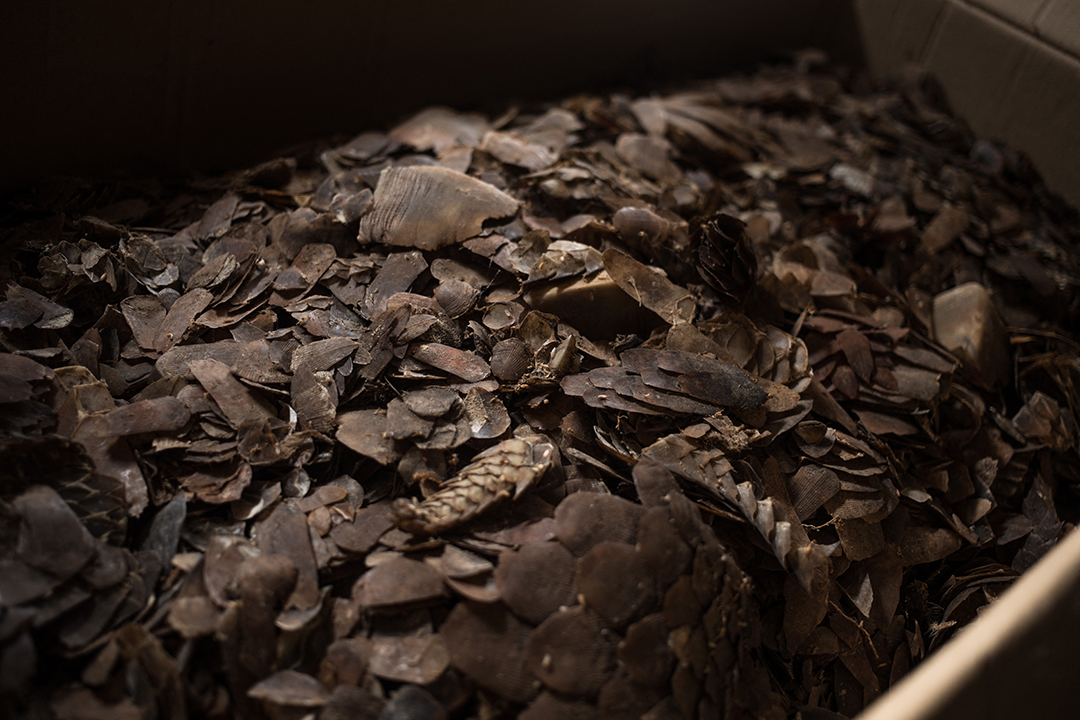
A box filled with scales of different species of pangolins seized by WWF rangers in Bayanga, DRC, on March 13, 2020. Poached by the local population, pangolin meat is consumed by hunters and the scales are destined for the Chinese pharmacopoeia market. One jar of pangolin scales sells in DRC for about 55 USD. Photo: Florent Vergnes/AFP
In March 2021, one year after the global outbreak of COVID-19, the World Wide Fund for Nature (WWF) and GlobeScan conducted a survey in five countries with high levels of consumption of wild animals – Vietnam, Myanmar, China, Thailand and the United States – to better understand whether concern about the zoonotic origins of the pandemic had persisted, and if people still supported government action to prevent zoonotic outbreaks at the source – by closing high-risk wildlife markets, for example. A core and important group of hold-outs– 7% of the total sample – had bought wildlife products from wet markets, and 7% had bought wildlife online, in the preceding year. At the same time as physical wildlife markets closed, the use of online markets and communication soared, and criminals across the world adapted swiftly to this reality. In China, the laws passed in response to the outbreak strengthened the country’s protection of wildlife in key respects and provided the basis for a strong crackdown on food markets – but it also left open key gaps, such as continuing to allow the use of wild animals in medicine.
This is a huge market driving wildlife trafficking, with medicinal uses, particularly in Chinese traditional medicine (TCM), a major driver of illegal flows of animal product. Loopholes still abound in Chinese legislation. For example, while the 2020 edition of China’s official pharmacopia removed pangolin scale from the key traditional Chinese medicine list, it is still listed as an ingredient in patent medicine formulas. And, in fact, in the first months of the pandemic, rather than addressing the TCM industry’s impact on demand, China’s National Health Commission recommended injections containing bear bile powder, as an effective treatment for COVID-19.
Similarly, hopes that lockdown would have disrupted the physical movement of goods have soured. It did appear to be the case that shipments of wildlife goods dropped – at least, measured across seizures of three key commodities, rhino horn, ivory, and pangolin, which all fell considerably in the first year of the pandemic. But it has been extremely dispiriting to see huge seizures of pangolin scale continue again in 2021. On 21 January, 2021, Nigerian customs in Lagos intercepted 8,800kg (almost 10 tons) of pangolin scales concealed in a shipment of furniture destined for Vietnam.
In March 2021, Cameroonian authorities seized another 4,000kg. Then, on 4 August, Nigerian customs again seized a shipment of 17,137kg of pangolin scales, 44kg of elephant tusks and 60kg in pangolin claws in Lekki, near Lagos. Likewise, information from on the ground in South Africa showed little disruption to abalone poaching or smuggling. It is likely that criminal networks have also been stockpiling during periods when restrictions made the movement of goods risky, and now have large reserves of preservable goods (like ivory, pangolin scale, and rhino horn) to put onto the market. The huge decline in rhino poaching and seizures may show that COVID-19 lockdowns were most effective at impeding flows of people (rather than goods).
In some places, border closures may have stopped poachers from accessing poaching grounds. They also, unfortunately, stopped tourists from visiting private lodges and national parks, whose revenues from tourism (along with those of people in all related value-chains) plummeted during the travel restrictions.In a continent where wildlife has huge rhetorical support, often written into legislation, it’s also the case that there is very little actual funding for wildlife conservation. In South Africa, 72% of funding for the national parks administration comes from revenues linked to tourism. There are fears that this has led conservation areas to cut down on security patrols to prevent wildlife crime.
For Dr Nyambe Nyambe, the executive director of the Kavango Zambezi Transfrontier Conservation Area (KZ TFCA) Secretariat, the decline in revenues due to the pandemic – both through the cessation of tourism and in budget cuts from aid donors – has meant a real hit for private and public conservation areas. But he thinks that the impact on wildlife authorities and other law enforcement responding to wildlife crime has been affected much more by broader slowdowns and limitations on criminal justice systems. “Although these ‘boots on the ground’ were considered essential workers, levels were reduced. Critical processes like the judiciary, financial and administrative functions also slowed down due to lockdowns,” he says.
“This was particularly the case for transboundary parks like the KZ TFCA, which brings together five governments to combine conservation areas stretching across the Okavango and Zambezi River Basin. We had to scale down joint operations; transboundary law enforcement requires a lot of planning and logistics, and this became more difficult. It really demonstrates that wildlife enforcement is part of a broader social-political system.”
But while travel restrictions are lifting, “there is no indication that travel inflows will immediately re-start,” adds Nyambe. This is part of a broader crisis for conservation areas. Many national parks are already seeing the negative consequences of the economic hardship caused by lockdowns, which deepens one of the drivers of poaching: the need for poor and struggling communities living in or near national parks to earn a living. Although there is not yet evidence about how criminal networks have made use of these vulnerabilities, parks have recognised them as a major challenge. Within this, there is perhaps a seed of positive change.
The COVID-19 crisis has led to a stark confrontation of the weaknesses of conservation funding models. Colleen Begg, director of the Niassa Carnivore Project, has said that in Mozambique, while conservation projects reliant on ecotourism were heavily hit by the pandemic, those that were “locally managed and staffed, nimble, resilient, and deeply embedded in the communities” were able to respond positively to the crisis. There are also signs that South African National Parks (SANParks) is rethinking its reliance on profit-driven ecotourism and is adopting approaches which are more resilient to economic and climate shocks. Nyambe says that the crisis has prompted conversations about diversifying income streams for conservation areas, and honed debates about resilience.
In areas of demand – like Asia and the US – there are also, perhaps, deeper shifts afoot. The same WWF and GlobeScan survey found overall high levels of support (around 85% of participants) for government action to close so-called “wet markets”, and to prevent deforestation, as well as sizeable decreases in wildlife consumption. In Vietnam and China, 39 and 28% of the sample said they have consumed less or stopped consuming wildlife since the outbreak. This effect may recede with time, but it does create an opening for campaigns against wildlife consumption to build on.
Ultimately, the Covid pandemic has triggered a shift in public perception of the risk of zoonotic disease outbreaks. Through the pandemic, experts have also repeatedly made the case that even if COVID-19 was not transmitted from a wild animal, the next outbreak could be. The reality is that “ecocentric” appeals for governments to address wildlife trafficking for the sake of preventing animal extinctions have been unable to galvanise the necessary commitment or investment. The risk of zoonotic disease adds a human-centred reason to regulate trade or prevent the poaching and smuggling of live animals. In the long term, this is where the challenge of addressing wildlife trafficking remains: the political priority afforded to “environmental issues”.
Reitano and Shaw agree that “both government actions and general public opinion appear to have been galvanised by the pandemic, creating a new front in the push against wildlife trafficking”. But they are also pessimistic that action will be swift, innovative, or comprehensive enough, as environmental damage is consistently seen as a niche concern amongst citizens, and the economic and political fallout from COVID-19 lockdowns put other issues at the forefront of policy agendas. In the short term, the immediate future is a dangerous one. Across communities that were reliant on tourism, poverty bites, while organised crime networks have weathered the pandemic better than most governments have, and demand shifts slowly. In South Africa, as borders have begun to open, rhino poaching numbers have swung upwards again.
Simone Haysom is an independent researcher and writer, focusing on urbanisation in Africa and the effects of conflict on civilians. She has worked for the Overseas Development Institute and published with the Institute for Security Studies, the Huffington Post and the Mail and Guardian.


